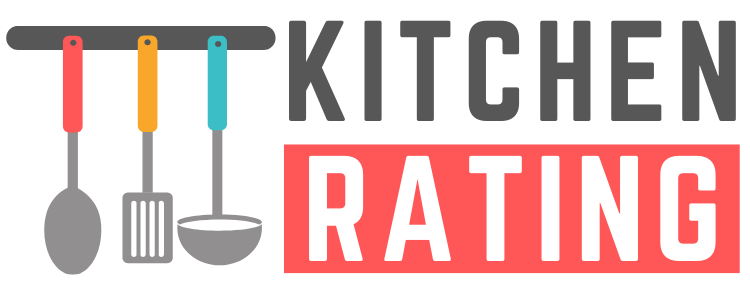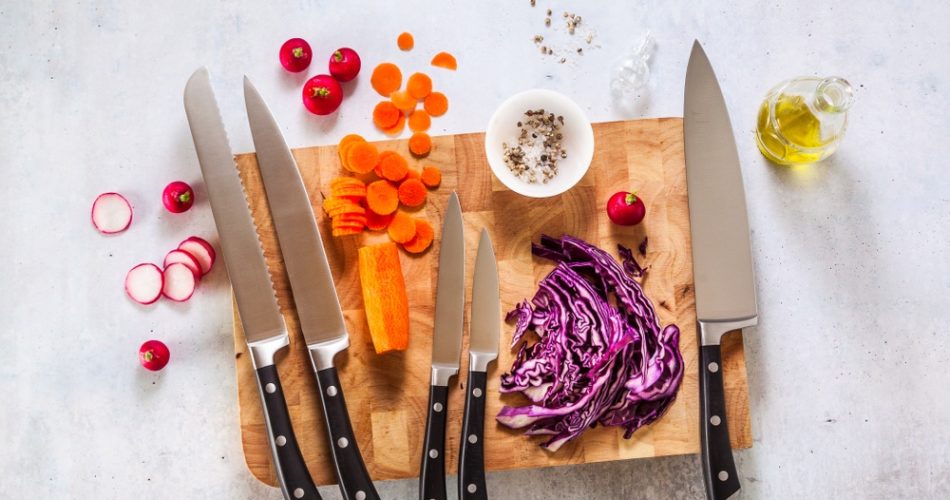Have a dull knife and don’t have a sharpener? Perhaps you’re wondering if you can get a blade sharp again without a sharpener? Well, you’ve come to the right place. This guide will give you all the necessary information you need to know when to sharpen your knives, keep your knives sharp and do it without a sharpening tool.
The Need to Sharpen Your Knives
It’s easy to agree with anyone that a dull knife can be pretty annoying. Not only does it make cutting and slicing nearly impossible, but it can also be dangerous.
Does the world come to a screeching halt? No.
Thankfully, there are several kitchen hacks on getting the cutting edge of your knife back in action — even without using a sharpener.
In those desperate times, everyday household tools can come to the rescue instead of a sharpener. That said, in the next few paragraphs, I’ll give you some insight into how you can sharpen a knife without a stone.
Before that, let us first examine what exactly happens when you sharpen a knife.
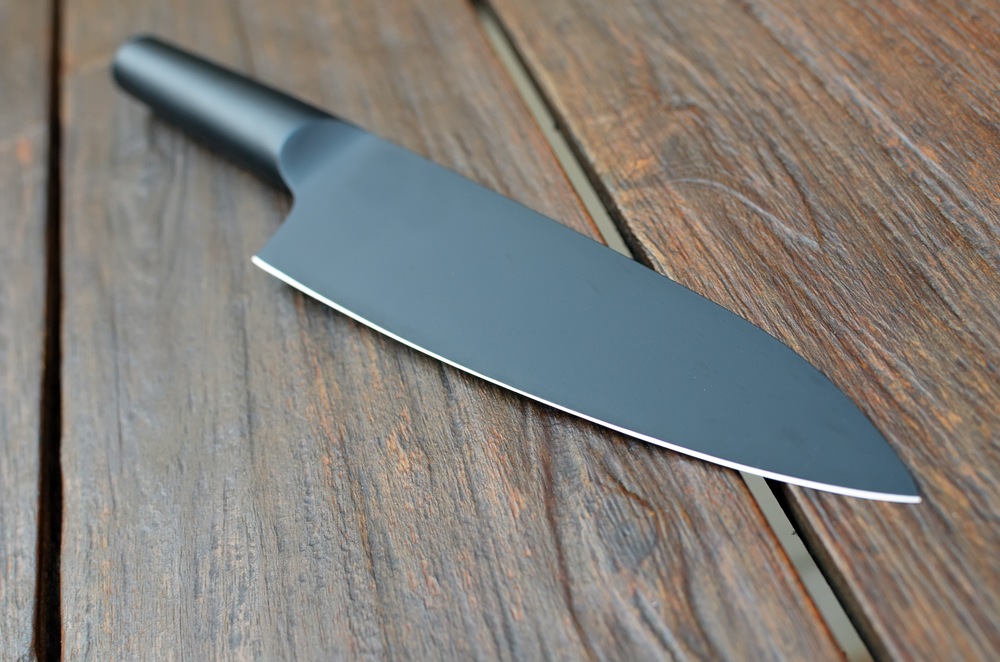
What Does It Mean to Sharpen a Knife?
In the traditional sense of the word, ‘sharpen’ means to give an object a keen edge. However, when it comes to knives, the definition is considerably more specific.
Sharpening a knife means restoring that knife’s sharpness by removing bits of metal from its blade such that it leaves a keen edge. In other words, if you’re not stripping some of the metal off of your blade, you are not sharpening it. However, sharpening a knife is not the only way to restore its cutting edge.
Honing and stropping are alternative ways to sharpen a knife. These methods realign the blade’s edge.
To quickly clarify what both terms mean, honing is the process of sharpening a blade using a stone. Meanwhile, stropping can let you obtain a relatively sharper edge by removing its burr (raised edge).
So, while some of the tips in this article will help you attain a sharper knife, it is essential to understand they may not ‘sharpen’ the knife from a technical standpoint.
That said, let’s jump right into how you can use everyday items such as a coffee mug or a bowl to restore your knife.
How to Sharpen a Knife Without a Sharpener
Here are some ways you can sharpen knives at home or anywhere without using a conventional sharpener:
Use your coffee mug!
It might not sound like much, but a coffee mug, your newest household sharpening stone, is one of the oldest (and more effective) tricks in the book.
This surprising new method can qualify as a fine-grit, medium-grit, or coarse-grit sharpening stone, depending upon how rough it is.
Pretty cool, huh?
You see, while mugs typically have polished surfaces, their bottoms are rough. This is customary of older mugs; however, some newer mugs have gloss all the way around.
Here is, step-by-step how to use a coffee mug for sharpening knives:
- Find a mug with a rough bottom to the touch.
- Turn the mug upside down and place it on a hard, non-slippery surface (a table generally works).
- Hold your knife at approximately 10 degrees to the rough edge of the mug.
- Then, stroke the entire length of the knife’s blade, making sure to maintain the same angle each time.
- Flip the blade and repeat the process for the new side.
- Remember to keep the same 10-degree angle and stroke each side equally for great results.
Should all your mugs be new, some ceramic bowls and plates share the same rough underside and can act as a substitute.
However, always remember to stand behind the blade in a way the edge is away from you. This can involve switching hands or altering your position to ensure safety.
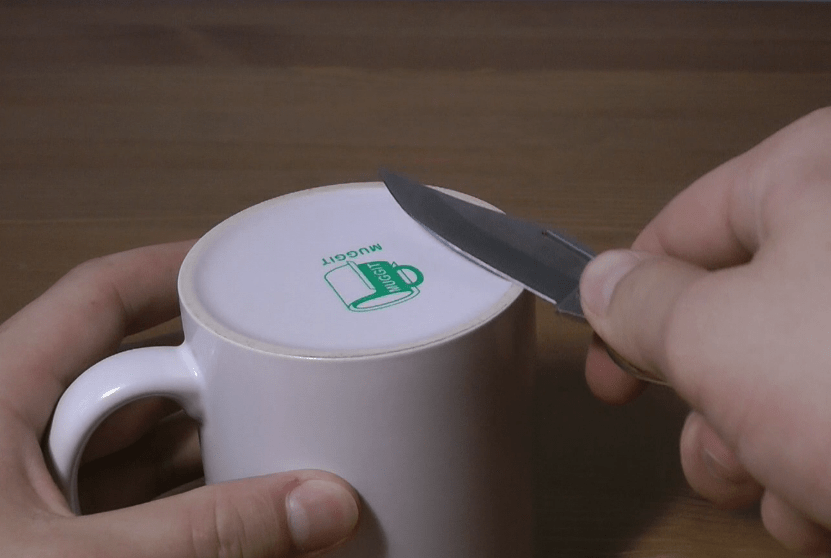
Use a Nail File
Another household item that can come in handy when you need to sharpen knives at home is a nail file. If you have ever used (or seen) a nail file, you’ll realize they have a rough surface, some with different grits. In many ways, they closely resemble the texture of conventional sharpening stones and this, of course, is why they’ve made it onto this list.
The best part? They also won’t ruin your high-quality blade during the sharpening process.
Here is a quick walkthrough on how to use the nail file for knife-sharpening purposes.
- Place your nail file (the rough side facing up) on a surface that’s hard and stable. A table or large rock, if you’re camping, typically works fine.
- Never put the file on your knee when you want to sharpen a knife, as there is a risk of serious cuts to your legs.
- Hold your knife at an angle of about 10 degrees to the file and the blade facing away from you.
- Use one hand to hold the file in place while stroking your knife blade away from yourself.
- Ensure that your strokes go the entire length of the blade and maintain the same angle throughout the sharpening process.
- Turn the knife over, this time with its cutting edge towards you, and carefully repeat the entire process.
- Keep sharpening until you achieve the desired edge for your knife.
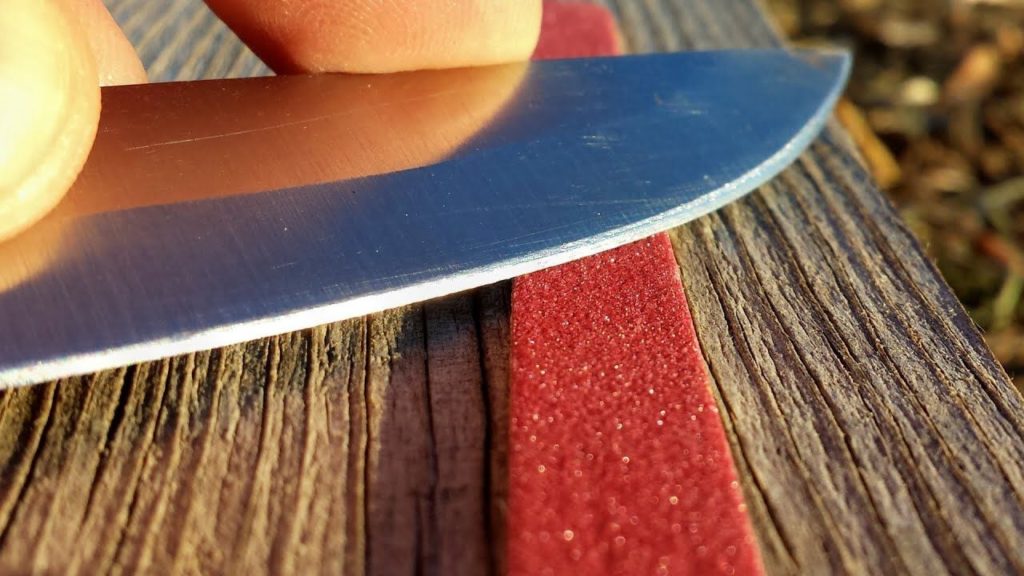
Use Another Knife
This is perfect if you’re out in the wilderness and you have two blunt knives in your pack. Of course, for our purposes, the hack is also quite useful at home with a knife block of knives that just aren’t sharp enough. Simply use one to sharpen the other, and you’re good to go!
If you’ve been using knives for a while, you’ve probably heard (or read) culinary experts say you shouldn’t use one knife to sharpen the other. This is often because most people do it incorrectly.
It’s true you should not use the blade of one knife to sharpen another’s blade as you will end up damaging both! Instead, use the back (non-cutting edge) of the first knife to sharpen the other’s cutting edge.
You see, the back of a knife is much more resistant to damage. Plus, if you do, it’s no big deal. The important cutting edge remains undamaged! That said, below are the instructions on how to sharpen one knife with another.
- Place the knife you intend to sharpen in your left and hold the other knife (the ‘sharpener’) in your left hand.
- Rotate both knives such that their blades face your right side.
- Next, place the knife’s spine in your right hand (the ‘sharpener’) at an angle of 10 degrees to the knife’s blade in your left hand (the first knife).
- Stroke the first knife’s blade against the second one in a direction away from you, making sure to maintain the 10-degree angle.
- Now, turn the first knife over, and repeat the process for the other side of this first blade.
- Work each side equally at the same angle until the blade is as sharp as you want.
- Repeat the process for your other knife (optional).
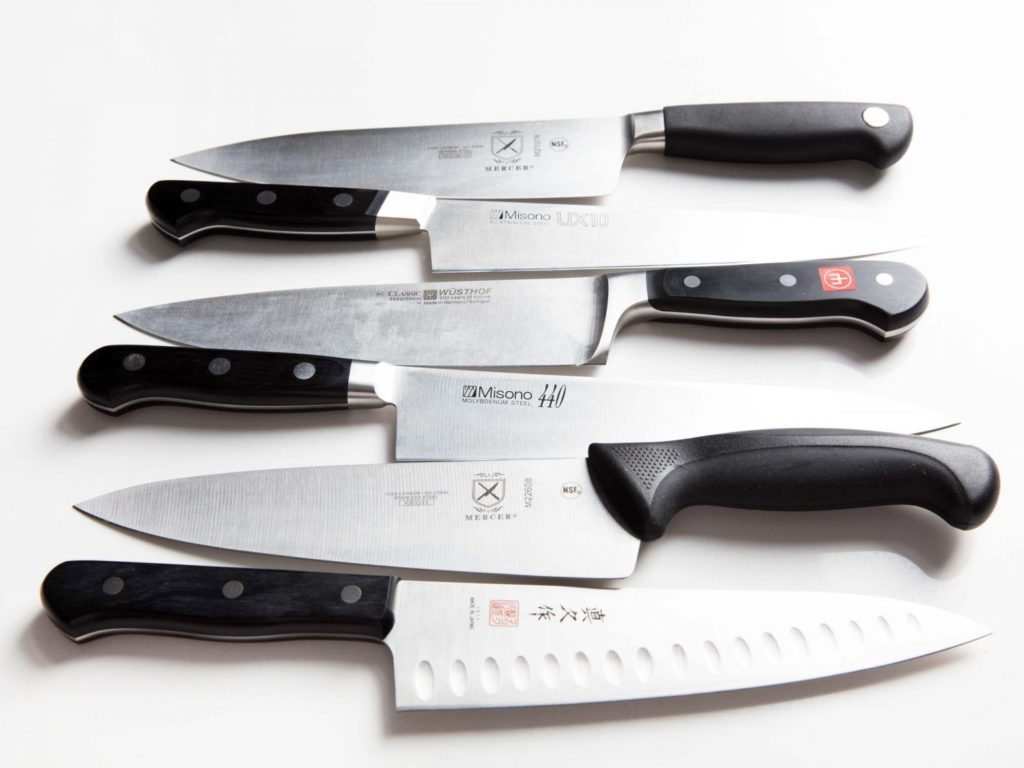
Use a Flat Rock
While the conventional sharpening stone is the best option for sharpening your knife, a typical stone can give you satisfactory results.
Conveniently, you don’t have to pack additional load when you go backpacking by using a flat rock. There are perfect rocks to be found everywhere. Nonetheless, you should not use the first stone that you find. The key to using a rock to sharpen your knife is finding the right rock. There are certain qualities you should look out for.
You should choose a stone that’s flat and relatively smooth for the best results.
Here’s how to go about it:
- Find a smooth flat rock and clean it with water with fresh water.
- Even if the rock is not dusty or dirty, still dip it into the water to lubricate it just as you would with a good sharpening stone.
- Place the knife once again at a 10-degree angle to the surface of the rock, keeping the cutting edge away from you.
- Next, stroke the full length of the knife’s blade away from you in smooth successive movements.
- Then, flip the blade and drag it towards yourself, this time to sharpen the other side of the blade.
- Repeat the process until you are satisfied with your blade.
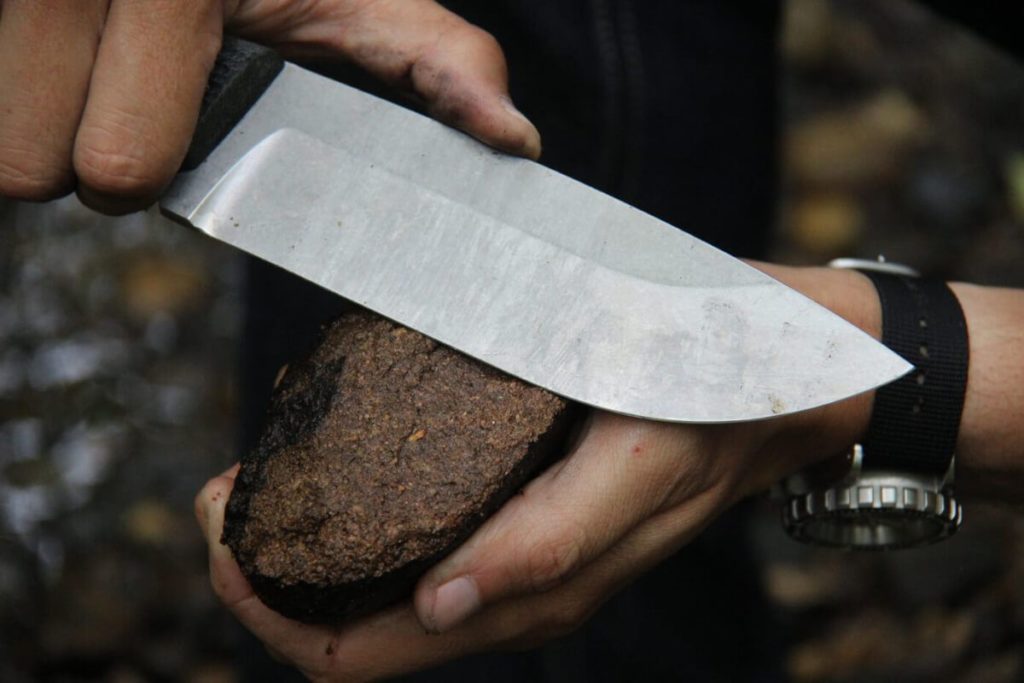
Use a Car Window
The last tip on how to sharpen your knife without a sharpening tool is using your car window. Understandably, this may seem odd and unconventional, but your car window can actually sharpen your knife.
The edge of any car window is nearly always unrefined and therefore rough (unlike the remaining surface). Hence dragging the edge of a knife across this surface acts similar to a sharpening rod.
This method does have limitations. It is only useful when you have access to a vehicle (such as on a camping trip or in your home garage).
These are the necessary steps to use your car window to sharpen a knife correctly:
- Roll your car window down until it’s about halfway, then proceed to check that its edge is slightly rough.
- Place your knife on the edge of the window at approximately 10 degrees and set the cutting edge, so it is facing away from you.
- Next, stroke the knife (the full length) away from you and into the window. This is where the window edge acts as a honing rod.
- Flip the knife and repeat the process. This time drag the knife blade towards yourself to sharpen the opposite side of the blade. Ensure you maintain the 10-degree angle.
- Repeat the entire process and work both sides of the blade sides until they are fully sharpened.
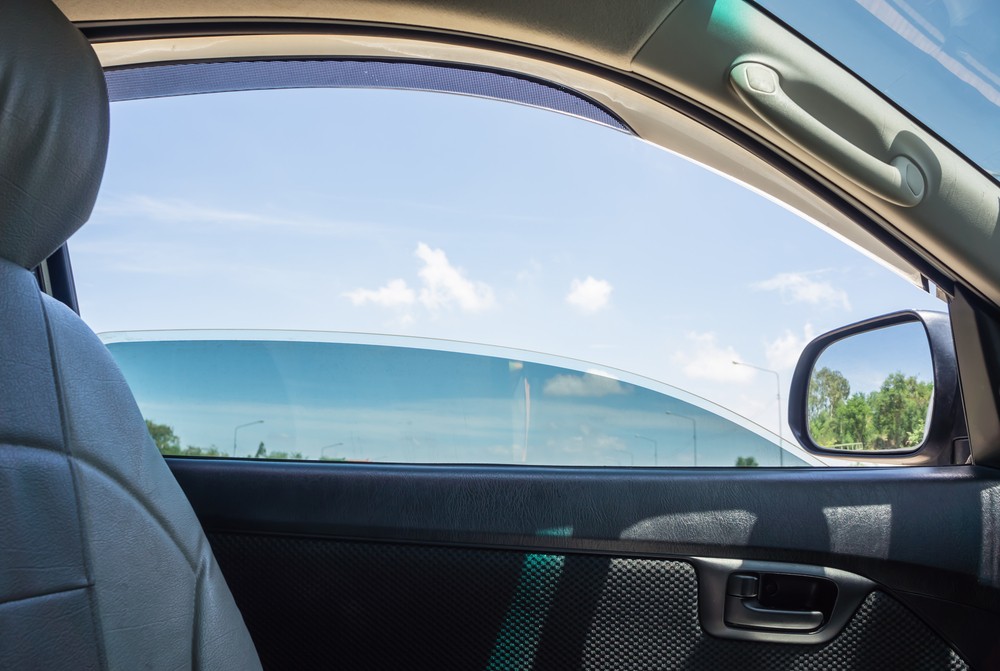
Final Takeaways
No matter how much care and protect your knife blades. Eventually, they will go dull. Even worse, when they do, you may not have a sharpening stone within reach. Thankfully, the above tips on how to sharpen a knife without a sharpener have proven to work and are useful in a pinch.
Nevertheless, you should only use these techniques when you do not have access to a sharpener or sharpening stone. Using household tools to sharpen your knife too frequently may damage your blade as they are not ideal sharpening tools. Thus, save this knowledge until only when you absolutely need it.
Do you have further questions on sharpening a knife without a stone? We’d love to hear from you!
FAQs
Can I sharpen my knife without a sharpener?
The simple answer is yes. There are several methods to help you sharpen your knife when you’re stranded outdoors or at home without a conventional sharpener.
Are sharpeners the best for restoring a blade’s keen edge?
Sharpeners are indeed your best option in restoring the sharpness of your blade. So, if you want to enjoy the proper value for the money you spent acquiring your knife, a high-quality sharpener is worth investing in.
Can I use household tools to sharpen my knife every time?
While household tools can come in handy when no sharpener is available, it is not recommended to use them every time your blade goes dull as you risk damaging your blade’s edge.
